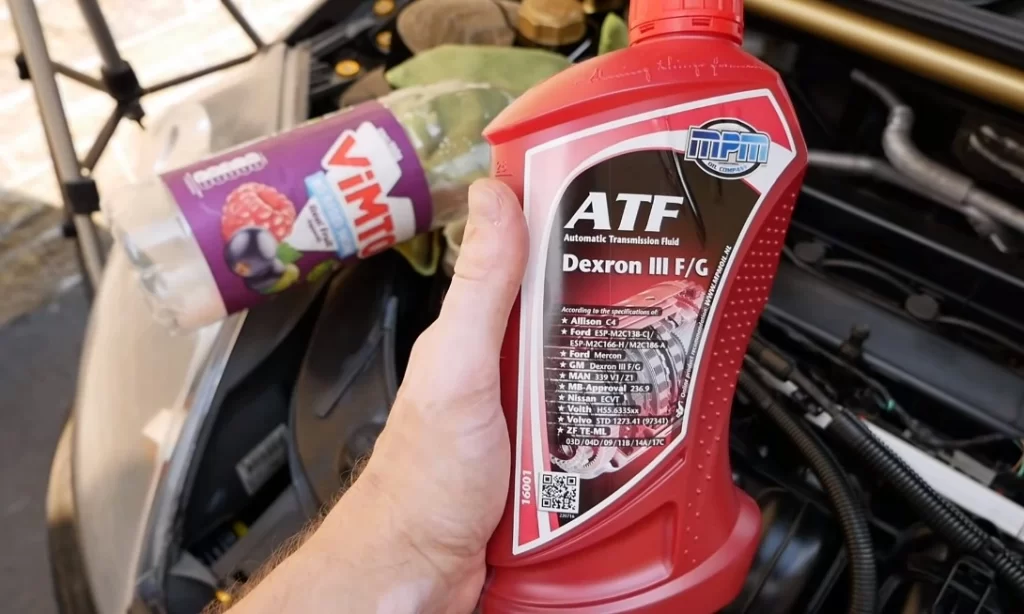When we keep discussing power steering fluids, we cannot forget one, which is Dexron III Power Steering Fluid. In this article, we are going in deep with this superb product, and we will explain some important things that you need to know about these power steering fluids.
What are power steering fluids, and why do you need them?
Despite their vastly differing properties, there are some parallels between these two fluids. A high-pressure pump drives a high-force mechanism with both of these hydraulic fluids.
To reduce friction, the fluids have a low viscosity and low viscosity. As a result, they can work under up to 1000 PSI pressures without overheating. High temperatures and tiny tubes aren’t a problem for them either. In addition, they provide the essential lubricity to prevent wear and tear on the spinning pump and sliding mechanical parts.
ATFs like Dexron is required for some power steering fluids, while others require fluids designed for the steering wheel but have a somewhat different set of characteristics.
But the seal materials used to keep the hydraulic fluids from breaking down are comparable in both fluids. When it comes to changing your car’s fluids, it’s always a good idea to stick to the guidelines provided by the manufacturer. Even if you can’t locate the exact power steering fluid you’re looking for; most auto parts stores have a comparable replacement.
Fluids for Automatic Transmissions.
Lubrication, cooling, and corrosion prevention in the transmission are why automatic transmission fluids are important. Transmissions can overheat and produce debris if you don’t use ATF or use the wrong kind for your car. This causes the transmission parts to wear down over time.
Synthetic oils and ATF are not required in manual gearboxes. On the other hand, Automatic transmission fluids are more susceptible to breakdown because of their high working temperatures. This means it’s time to change the fluid.
It is always advisable to utilize the finest fluids that efficiently boost lubrication and minimize heat when changing transmission fluids since you will not be replacing motor oils as often.
Fluids for the Power Steering.
To keep the seals in the power steering system clean, lubricated, and maintained, a power steering fluid is required. Hydraulic power is sent to the steering wheel as the vehicle is being steered.

It’s no surprise that steering fluids come in so many varieties, each with its own unique set of capabilities. Except for the suggestions provided by your vehicle’s manufacturer, there is no guidance showing which fluids are optimal for usage in your vehicle.
You must, however, know which PS fluid is appropriate for your vehicle so that you can change it if it leaks. As a result of leaks, the seals in your power steering system will harden, and debris will wear down the seal surfaces over time.
You can only become worse by using power steering fluids that are dirty and depleted. You may avoid this unneeded pain by regularly inspecting and changing the correct PS fluid.
Dexron III Power Steering Fluid; detailed.
GM’s Dexron-III(G) specification (GM6417M), introduced in December 1998, was a synthetic blend automatic transmission fluid specifically designed to address the VCCC shuddering issue. It was the first synthetic blend automatic transmission fluid on the market.
It is also appropriate for use in power steering systems, some hydraulic systems, and rotary air compressors, where good low-temperature fluidity is required, among other applications.
Products that have been licensed by GM Dexron-III(G) have a license number on the can that begins with the letter G. As an illustration, G-30001. This fluid is backward compatible with all prior Dexron fluids, as well as the Type “A” and the Type “A” fluids produced from 1950 to 1966, as well as the Type “A” Suffix “A” and the Type “A” fluids manufactured after 1966.
GM’s Dexron III(H).
GM’s Dexron III(H) specification (GMN10055) was introduced in 2003, and it superseded the previous III specification (G). The (H) is an additive package containing an improved friction modifier and oxidation-stable base oil, among other things (group 2).
Oils manufactured in accordance with this standard provide superior foam management, longer fluid life, and longer maintenance of friction qualities and anti-shudder properties than other oils. It is universally applicable to all automatic transmissions, including those with and without a controlled torque lockup clutch, sometimes known as a GKÜB (German for “gear-clutch-lock.”
About Dexron Company and their products.
Technical requirements for automatic transmission fluid (ATF) developed by General Motors are known as DEXRON (GM).
GM ensures that the name and specifications are protected by licensing the name and specs to other firms who produce and sell the fluid under their brand names. Several Dexron fluids can be sold under a different brand name, but not all.
License numbers that begin with B through J are required for all approved Dexron fluids. It’s possible that the fluid isn’t GM-approved if it lacks a license number or the “Dexron Approved” emblem on the container.
Although GM employs gearboxes made by various suppliers and manufacturers, GM does not build these transmissions. Several of these automatic transmissions use proprietary fluids that aren’t listed here.

Some related FAQs about Dexron III Power Steering Fluid.
What is Dexron III compatible with?
Dexron VI was announced by GM as the only fluid compatible with the Dexron III. The carmaker then published a list of firms and product names that correspond with GM’s standards for Dexron VI, which permitted licensing (see link in Resources section).
Is there any difference between Dexron and Dexron 3?
Better friction stability improved, high-temperature oxidation stability, and enhanced material compatibility are among the new features of Dexron-III(F).
Cold weather transmission performance is improved by using Dexron-III(F) with the same fluidity as Dexron-II(E).
Can I use Dexron 6 instead of 3?
Alternatively to DEXRON-III, DEXRON-VI may be utilized in any proportion in older model automobiles equipped with an automatic transmission, in any ratio (for instance, topping off the fluid in the event of a repair or fluid change).
Additionally, DEXRON-VI is backward-compatible with any previous version of DEXRON when used in an automatic transmission.
What happens if I use the wrong transmission fluid?
The use of the incorrect fluid can result in inadequate lubrication, overheating, and, in some instances, transmission failure.
Even if a technician can reverse the damage, it is possible that the transmission may not function properly. Mistakenly adding engine oil or brake fluid to your transmission might potentially cause it to fail.
We hope you’ve got the answer that you’ve needed for the question, “Dexron III Power Steering Fluid” reading our explanation. If you have more questions just leave a comment below, and we are really straightforward to help you further. If you need review and problems of the steering wheel turns itself, check this link for it. Thank you.
